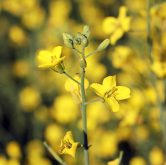CNS Canada — As organic producers look to clean out the 2017 crop from their bins before seeding, they’re finding lower prices than they’re willing to sell for.
Contracts have been filled up, meaning some producers who were waiting for higher prices are out of luck with no options to sell their crops. Some buyers in Western Canada have heard complaints from producers who are frustrated at not being able to find buyers for their malt barley crops.
The malt barley market is “very quiet and that’s kind of unfortunate because there’s some really nice barley out there,” said Scott Shiels with Grain Millers at Yorkton, Sask.
Read Also

U.S. grains: CBOT soybeans, corn, wheat fall in USDA data aftermath
Chicago grains took a dive on Friday, following a closely watched U.S. government crop report and the release of export data that could provide clues into Chinese buying.
Shiels has been recommending producers hang onto their malt barley and wait it out, but he knows they can’t always afford to. Some producers have been inquiring about selling it as feed — which would mean taking a hit financially.
The organic hemp market has been struggling also. China has been flooding the international marketplace with cheap organic hemp, dragging down the price. In Canada organic hemp has fallen to $1.30 per pound, from $2.25 two years ago.
“I know a number of people that are not putting (hemp) in this year simply because it’s not worth the time and effort,” said Tristan Gill of Westaqua Commodity Group in Vancouver.
Other organic crops are dropping in price too. According to Jason Breault of RW Organics at Mossbank, Sask., organic premiums are starting to fall more in line at two to 2-1/2 times conventional prices, compared to three times in years past.
Breault thinks lower prices are due to more conventional processors moving into the organic business and noticing a large price gap.
The idea among buyers, he said, is “‘Oh, let’s pull ourselves in a bit and see if we can get it to come back and be more realistic.’ And I always agree if we can stay a constant good price it’s better than having highs and lows.”
Some market opportunities are promising for producers starting to plan spring acres. Yellow peas are looking like a good crop to plant due to growth in vegan and vegetarian plant protein markets.
“Pea manufacturers want explicitly yellow peas because when they make the finite finished product, yellow peas have a very white, slightly yellow tinge to it, whereas the green peas are green,” Gill said.
Shiels is expecting to see an increase in oat, wheat and flax acres. Breault also thinks they’ll be an increase in wheat acres — specifically hard red spring wheat.
— Ashley Robinson writes for Commodity News Service Canada, a Glacier FarmMedia company specializing in grain and commodity market reporting. Follow her at @ashleymr1993 on Twitter.















